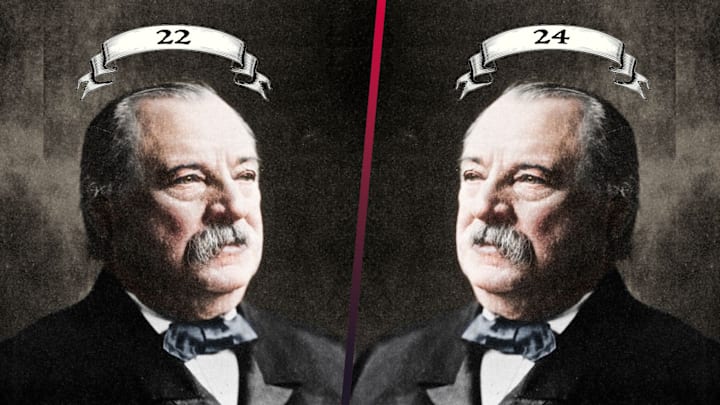Joe Biden is regarded as the 46th president of the United States. Yet, only 45 people have filled that position. Blame Grover Cleveland for this irritating historical discrepancy.
Take a look at any U.S. history textbook and you’ll see the New Jersey-born Democrat cited as our 22nd and 24th president. Cleveland is the only two-term president to serve non-consecutive terms. He won the 1884 election against Republican candidate James G. Blaine, becoming the first Democrat to win the White House since the Civil War, but lost his reelection bid to Republican Benjamin Harrison in 1888.
The 1892 election presented a rematch between Cleveland and Harrison with the addition of a third-party candidate, James B. Weaver of the People’s Party. Weaver had a strong showing on election day: He won all of the electoral votes in Kansas, Colorado, Nevada, and Idaho, and shaved support from his opponents in Oregon and North Dakota, two states that split their electoral votes. In the end, however, Cleveland bested the competition with 277 electoral votes to Harrison’s 145 and Weaver’s 22.
Therefore, most historians count Grover Cleveland as two separate presidents. They justify the distinction by arguing that the four-year gap between terms meant that the first- and second-term Clevelands weren’t the same president, despite being the exact same person.
That did not seem logical to later President Harry S. Truman. “If you count the administrations of Grover Cleveland twice because another president held office between his first and second term," Truman once said, “you might try to justify the designation of me as 33rd president. But then why don’t you number all the second terms of other presidents and the third and fourth terms of President Roosevelt, and where will I be? I am the 32nd president.” (For the record, historians count Truman as the 33rd president.)
In 2009, President Barack Obama reignited the debate during his first inaugural address. After being sworn in, he erroneously claimed that “45 Americans have now taken the presidential oath."
Read More About U.S. Presidents:
A version of this story was published in 2013; it has been updated for 2024.
